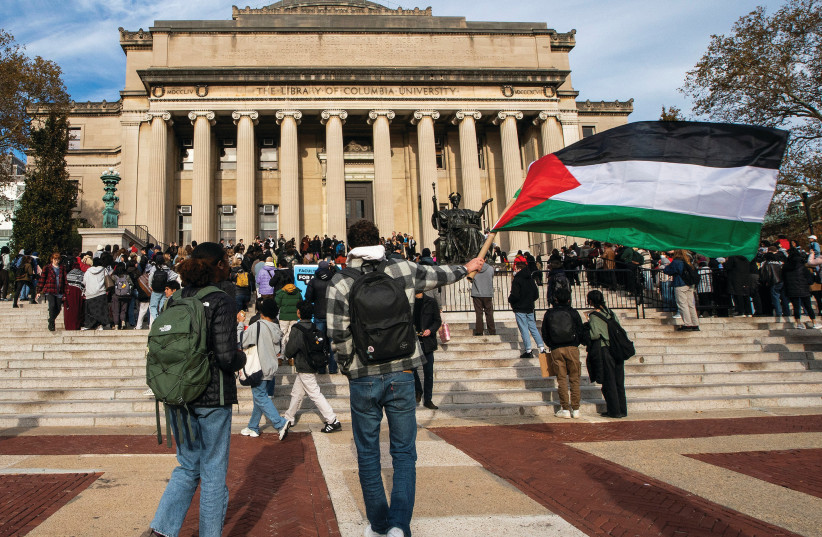Why campus antisemitism matters
Since the October 7 terrorist attack against Israeli civilians, York University has been a flashpoint of anti-Israel sentiment. A major campus paper, Excalibur, reported how the school was “engulfed by protests, demonstrations,” with students chanting “Israel is a terrorist state” and “Viva intifada.” A student union made headlines for its anti-Israel stance. A teacher’s union distributed a “Palestine toolkit” to teach in classes. Meanwhile, Hillel Ontario reported a threefold increase in antisemitism since October 7, compared to the previous year.
But the unrest emanating from students at the university had been boiling for some time. Since 2016, a pro-intifada mural has been displayed at York’s most prominent food court.
In November 2019, it wasn’t the first time a speaker came to campus to talk about Israel, but the protest against the visiting Israel Defense Forces reservists was the loudest and most uncivil one in recent memory. Hundreds of students spewed hate-filled chants; there were physical altercations.
It cast a dark cloud over academic freedom, as the event highlighted the challenges universities face in balancing free speech with the safety and inclusivity of their students. These past few months, however, have reached the breaking point, with a Toronto law firm taking legal action against local universities for their alleged complicity in allowing antisemitic incidents to occur over the course of decades.
Of course, York isn’t the only culprit, not by far. At New York’s Columbia University in early February, antisemitic posters were plastered around campus, comparing Jews to skunks. Two university groups were barred for “threatening rhetoric and intimidation,” in addition to many other examples of Jews being targeted. Lawfare was employed here, too, when, in late February, students decided to sue the school for its alleged antisemitism.

The line between peaceful and violent protest can be thin
Whereas protests are a vital form of expression in democracies, the line between peaceful demonstration and disruptive or violent protest can be thin, as seen in these examples. In a recent survey from the Anti-Defamation League, nearly three-quarters of Jews on campus have been victims of antisemitism in the US, and two-thirds do not feel safe on campus. A Canadian survey showed that 18 percent of campuses dealt poorly with antisemitic hate. The Capitol Hill testimony, where three university presidents responded that they needed “context” to condemn outright antisemitism, set off alarms.
The situation at York University, along with similar issues at institutions around the world, should now be a call to action for all reasonably minded students and faculty.
As students, we have a role to play in advocating for academic environments that uphold the values of free speech, inclusivity, and critical engagement with difficult topics. This means actively participating in civil dialogue, educating ourselves and others about the complexities of global conflicts, and striving for solutions that respect the rights and dignity of all parties involved.
We must engage thoughtfully and proactively, recognizing our potential to influence positive change. By doing so, we not only contribute to resolving immediate concerns but also take a stand for the principles that should define our academic institutions and our society.
The writer is a student at the Schulich School of Business at York University in Toronto.





Comments are closed.